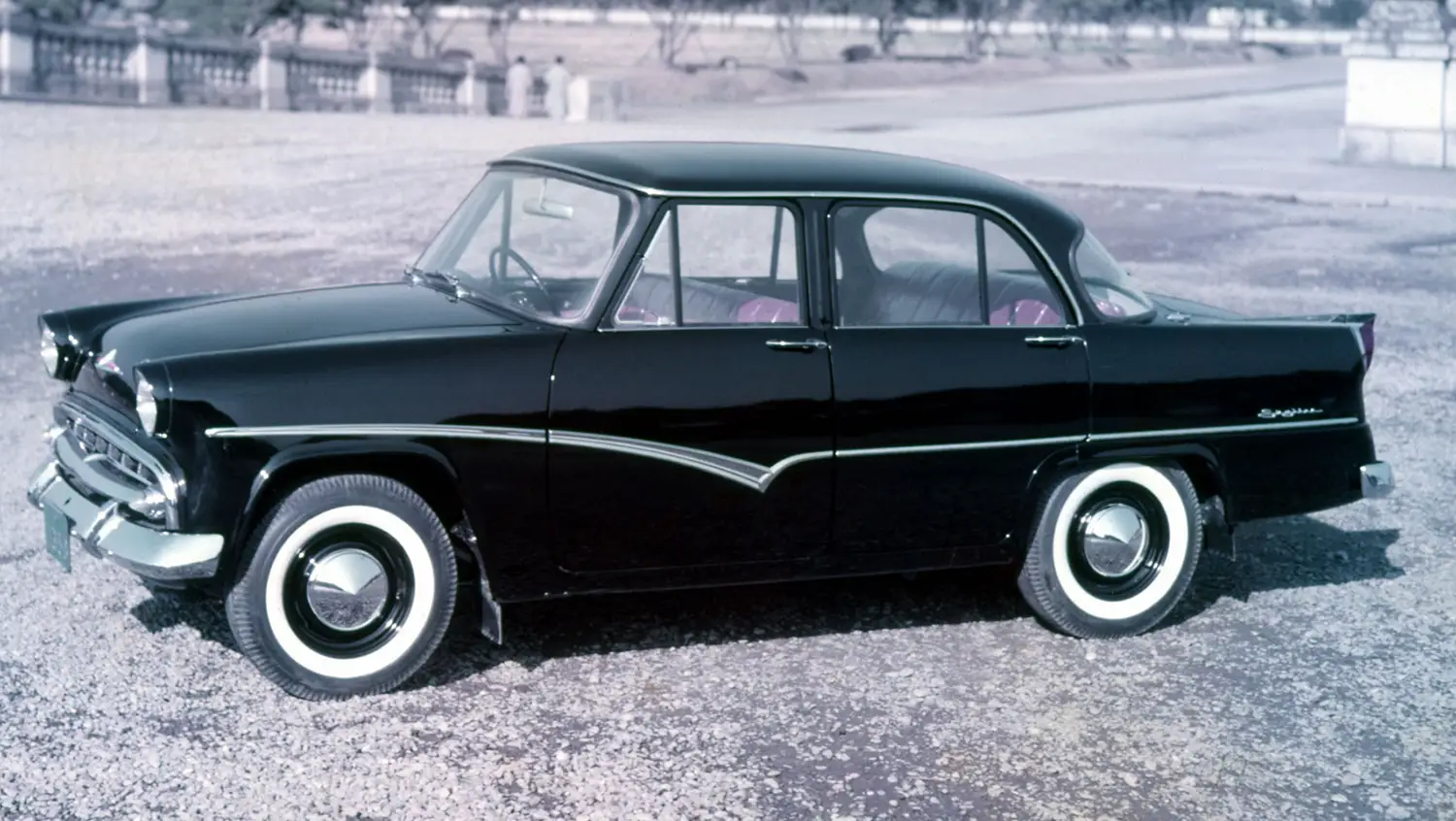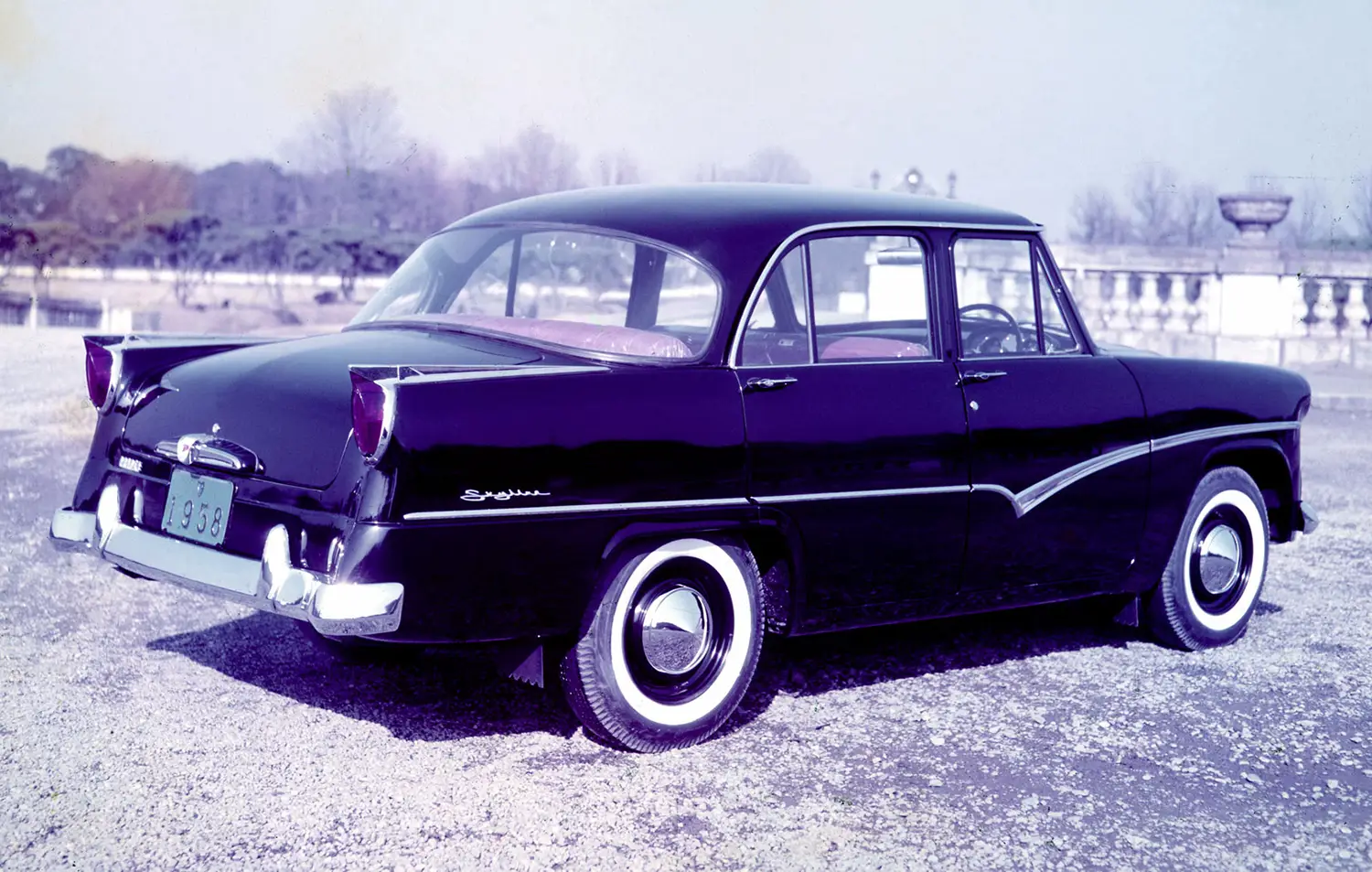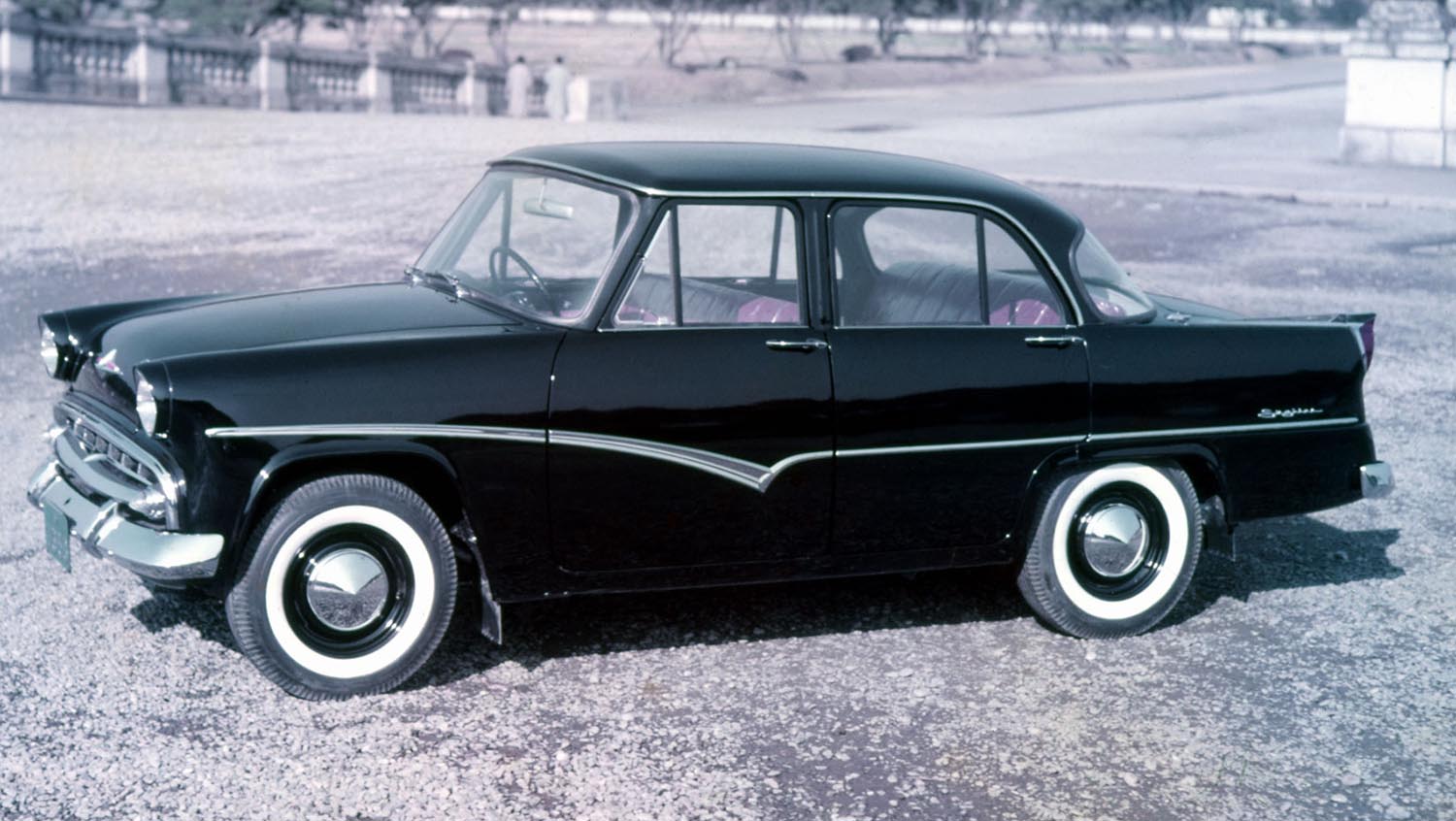
The name “Skyline” conjures images of track dominance and legendary speed, yet the icon’s start was far more genteel. The lineage of the famous performance car begins in 1957, not as a Nissan, but as the creation of the Prince Motor Company. This original 1957 Nissan Skyline was a far cry from the Godzilla that would shock the automotive world decades later, instead aiming for the luxury sedan segment.
The Prince of Japanese Luxury
The Prince Motor Company, born from the remnants of a successful aircraft manufacturer, wanted to compete in the burgeoning post-war Japanese car market. Their answer was the Skyline, a handsome, upmarket four-door sedan. Its grand unveiling at the Tokyo Takarazuka Theater reflected the high aspirations Prince had for this new vehicle. It clearly signalled an era where Japanese manufacturers looked outward for design inspiration.
American Influence in Early Design
The initial design, coded ALSI-1, drew heavily from American aesthetics of the late 1950s. Designers incorporated telltale styling cues like small rear tail fins, a liberal application of chrome trim, and an attractive two-tone paint job. The silhouette was elegant, conventional, and boxy, a shape that gave little hint of the performance potential to come. This focus on luxury and comfort established the first-generation Skyline as a premium domestic automobile.
Establishing the Skyline Nameplate
The first generation was produced from 1957 until 1964 and included a variety of body styles beyond the sedan. Shoppers could also select a five-door station wagon. These vehicles, including the deluxe versions, were marketed as the Prince Skyline. The name itself suggested a connection to elevated status and a journey into the future of motoring.
The First Spark of Performance Heritage
While the 1957 model was decidedly a luxury car, the foundation for the Skyline’s racing pedigree was being subtly laid in the background. Prince Motor Company engineers, including the influential Shinichiro Sakurai, who would later be known as “Mr. Skyline,” were thinking about speed. The car’s inherent robust engineering would provide a solid base for future performance upgrades.
The Engineering of the ALSID-1
The first Skyline was technically advanced for its time and place in the market. Notably, the chassis employed a De Dion tube rear suspension, a costly and sophisticated setup. This choice provided better road-holding and comfort than the standard solid axles of many rivals. This dedication to refined engineering hints at the core competence that would later define the Skyline legend.
Evolution Before the Merger
Prince continued to develop the first-generation model, making minor changes and performance improvements over its production run. An engine update in 1959, designated the ALSI-2, increased power output. Later, a 1.9-liter engine from the larger Gloria was also installed in certain models. This continuous refinement showcased a brand focused on evolving its flagship.
The Powertrain: Modest but Effective
The original 1957 Nissan Skyline was powered by an inline four-cylinder engine. This early setup perfectly matched the car’s intended purpose as a comfortable cruiser for the family. The four-cylinder unit was reliable and efficient, exactly what the Japanese market prioritized for everyday driving.
Performance Specifications of the Prince Skyline
The launch model used the 1.5-liter, overhead-valve GA-30 engine. This engine was rated to produce 44 kilowatts, equating to approximately 60 horsepower. Torque was approximately 105 Newton-meters. This gave the Skyline a top speed of about 125 kilometres per hour, which was considered quite fast for a domestic Japanese car of the era. The performance was modest but perfectly adequate.
A Merging of Motor Legacies
The real turning point for the Skyline came in 1966 when the Prince Motor Company merged with Nissan. This acquisition gave Nissan access to Prince’s engineering talent and their robust, high-performance-oriented platforms. The Skyline name was retained, becoming the Nissan Skyline, and the car was now on an irreversible path toward motorsport glory.
The Foundation of a Legend
The legacy of the original 1957 model is simply that of the foundational stone. It was the first page of a story that would grow into an epic. Without the initial luxury sedan, the name would never have been established, nor would the engineering framework have existed for future performance variants. The Skyline began not as a predator, but as a prestigious, well-engineered saloon.
Disclaimer: Content on this site is for informational purposes only. Vehicle specs, pricing, and availability may change. Always verify details with official sources before making decisions. Opinions are those of the authors.
Source: Nissan

